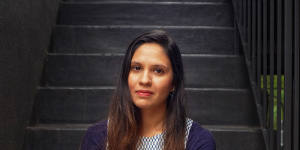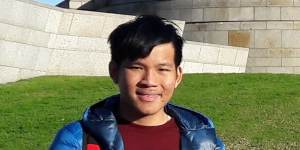As Victoria entered lockdown and the country shut its border,Mrs Alvi was apart from her husband and family.

PhD student Sadia Alvi.Luis Enrique Ascui
She could not fly back to her home country of Pakistan. It would be nine months before Mrs Alvi saw her husband,who was in NSW.
She was not allowed to send her daughter to kindergarten during Victoria’s long second COVID-19 wave and fell behind in her research.
Mrs Alvi,who is completing a PhD in pharmacology at Monash University,said international students were forgotten during the pandemic.
“I don’t think other countries discriminated that much based on residential status,” she said.
The University of Melbourne is one of the latest Victorian institutions to get behind COVID-19 vaccinations,announcing it will require everyone on campus to be fully vaccinated against the virus.
Her criticism is not unique. The Department of Home Affairs has described international students as,with many having “limited options for returning home,and restricted access to work and health services”.
International students do not receive federal welfare and in 2020,including the wage-replacement scheme JobKeeper. Instead,they were allowed to access their super and work extra hours in health,aged and disability care.
International student numbers have slumped during coronavirus,with student visa applications falling 36 per cent to about 262,000 in the year to June 2021.
But as Australia prepares to reopen its borders and revive its third-largest export industry,will a welcome mat be enough?
Rob Lawrence,of international education consultancy Prospect Research and Marketing,said Australia would regain favour but would “have to make a massive effort to welcome international students back”.
A survey of 3400 students found the federal government’s decision to tell temporary visa-holders to go home when COVID-19 hit had “damaged the country’s reputation among international students,very many of whom were unable to return to their home country”.
Tun Xiang Foo returned to Malaysia in the early stages of the pandemic and has been studying remotely since.
The student,who will soon graduate with an arts degree from the University of Melbourne,said unis would pay the price for almost two academic years’ worth of travel bans.
“I’ve heard from undergrad students who are planning to transfer out or go elsewhere,” he said.

International student Tun Xiang Foo at the Shrine of Remembrance in Melbourne.Supplied
The International Education Association of Australia’s student survey found international students have experienced a “dual sense of disconnection” during COVID-19,feeling isolated from both their home and host countries as campuses shut and lessons went online.
In addition,it said:
“When asked in late 2020 about their feelings towards their host countries[Australia and New Zealand],these international students were clearly still enamoured of the deep attributes of both countries – the beauty of the places,their welcoming communities and their diversity,” it said.
“And yet,it is clear that many international students have been disappointed by a lack of recognition of the hardships they have endured. ”
The Morning Edition newsletter is our guide to the day’s most important and interesting stories,analysis and insights..